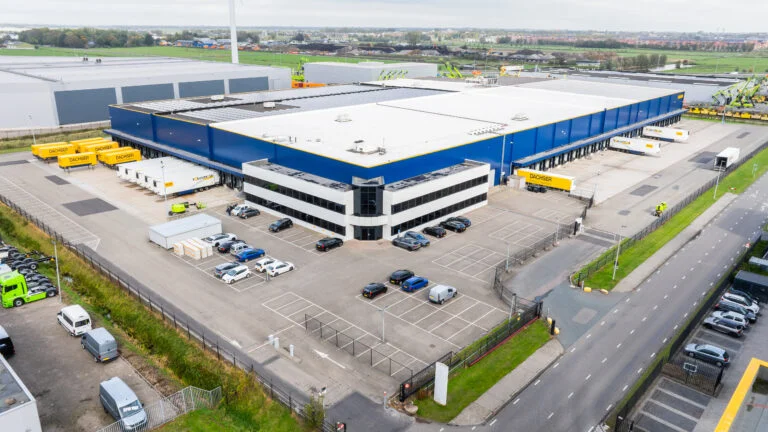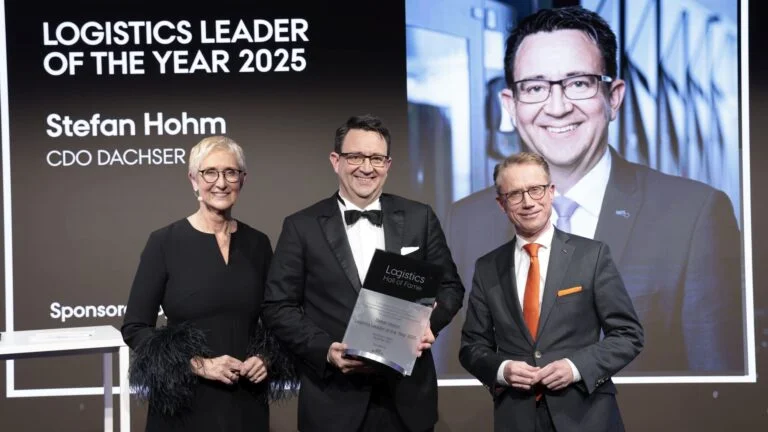Ten years of driving force in e-mobility
By Frank Zscheile I 8 minute read
22/08/2025
From “El Carrito”, the battery-powered “pack horse” in the old town of Málaga, to the 40-ton eActros 600 with a range of 500 kilometers, it’s a long way to go. DACHSER has gone that far. The logistics service provider has played a significant role in the further development of e-mobility for both small and large-scale transport. The image gallery features highlights from ten years of electric mobility at DACHSER.
Quick Read
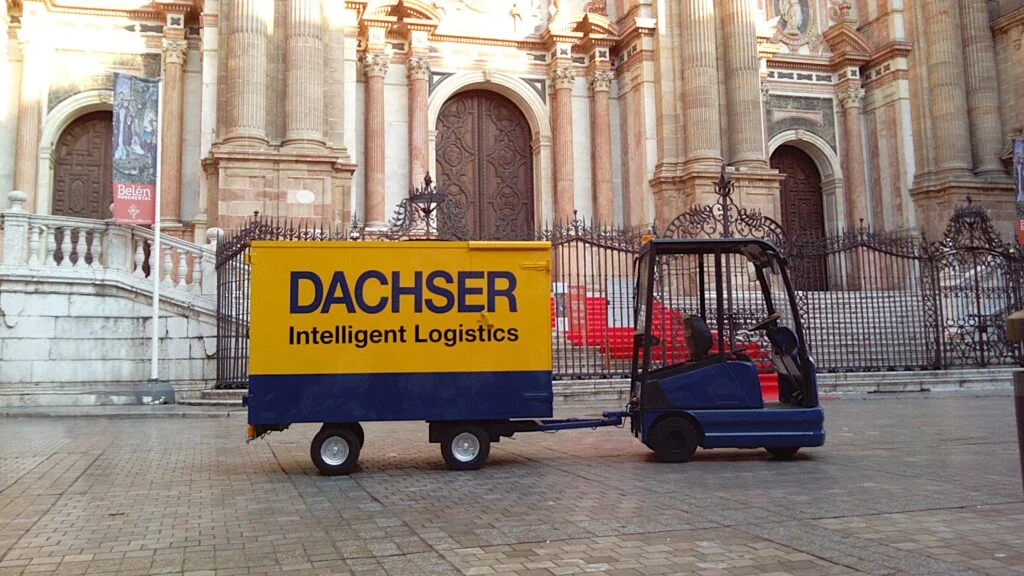
The narrow streets of Málaga’s Mediterranean old town are ideal for a shopping spree. Delivery traffic must be small and maneuverable here. This was the approach to launching the pilot project “City Center Ecological Distribution” in 2015. With 7 km/h when fully loaded and a turning radius of just 1.65 meters, “El Carrito” has been moving quietly and nimbly through the old town streets ever since – like a “pack horse” from the past. It just doesn’t go back to the stable at night, but to the charging station in a municipal parking garage.
2015
With the “little pack horse” through narrow old town alleys

Things got a bit bigger with the FUSO eCanter. Since spring 2018, DACHSER has been using Daimler’s fully electric light-duty trucks in city center traffic as the first customer. With two vehicles in Berlin and Stuttgart it started. They are building blocks of the DACHSER project ‘City Distribution’, so their habitat is the city center. The choice fell on the FUSO eCanter because the vehicle is the first purely electrically powered truck to be produced in series.
For the innovation project on emission-free parcel delivery in the city center of Stuttgart, DACHSER was also recognized at the end of 2018 as part of the Federal Competition for Sustainable Urban Logistics. excellent. “With a holistic solution that combines components such as city hubs, electrically assisted cargo bikes, electric trucks, as well as IT-controlled goods bundling and route planning in Stuttgart, DACHSER is taking the lead and setting an important example in this market segment,” as stated in the commendation from the Federal Ministry for the Environment.
2018
Electric trucks go into series production
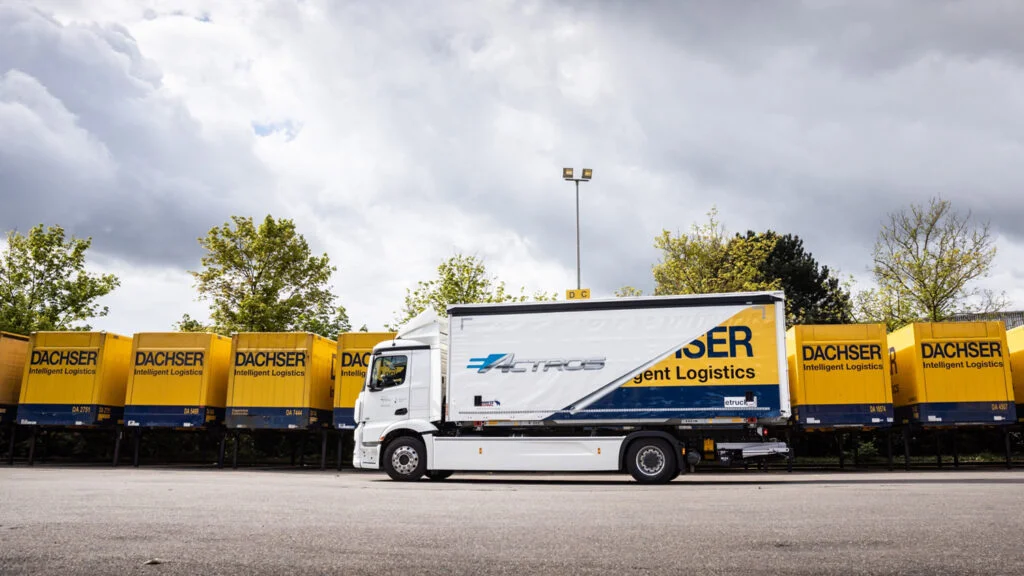
With the Mercedes-Benz eActros 300, DACHSER expanded its existing electric vehicle mix in May 2019 for city center deliveries. The eActros can be used to directly visit customers and, on the other hand, to load consignments onto the micro-hub in the Heslach district of Stuttgart. Its key features: 18+1 tonnes permissible gross weight, up to 5 tonnes payload, loading area for 18 pallets, range of 200 kilometers.
This made Stuttgart the first emission-free delivery area for non-refrigerated general cargo consignments in the DACHSER network, covering an area of around four square kilometers. The innovative city logistics concept is called “DACHSER Emission-Free Delivery”. And it has proven itself time and again: first in Freiburg and Oslo, then in Berlin, Munich, Strasbourg, Paris, Prague, Copenhagen, Madrid and Porto. To date, Barcelona, Cologne, Dortmund, Hamburg, Madrid, Porto, Rotterdam, Stockholm, Warsaw and Vienna have also been added, so that DACHSER Emission-Free is now established in 19 European cities. By the end of 2025, there will be 25.
2019
The electric 18-tonner celebrates its premiere

2022 marks another important year for DACHSER in terms of e-mobility. Thus, the branches in Freiburg, Hamburg, and Malsch near Karlsruhe were developed into “E-Mobility locations”. Since then, the focus has been on researching and testing zero-emission technologies, integration into processes, and intelligent power and load management for practical applicability. The goal is to prepare the entire DACHSER network for the ramp-up of electromobility and thus facilitate the transformation towards net-zero greenhouse gas emissions. Here in the picture is the Freiburg’s electric truck fleet in 2023 to see.
2022
Research and practice at the e-mobility locations
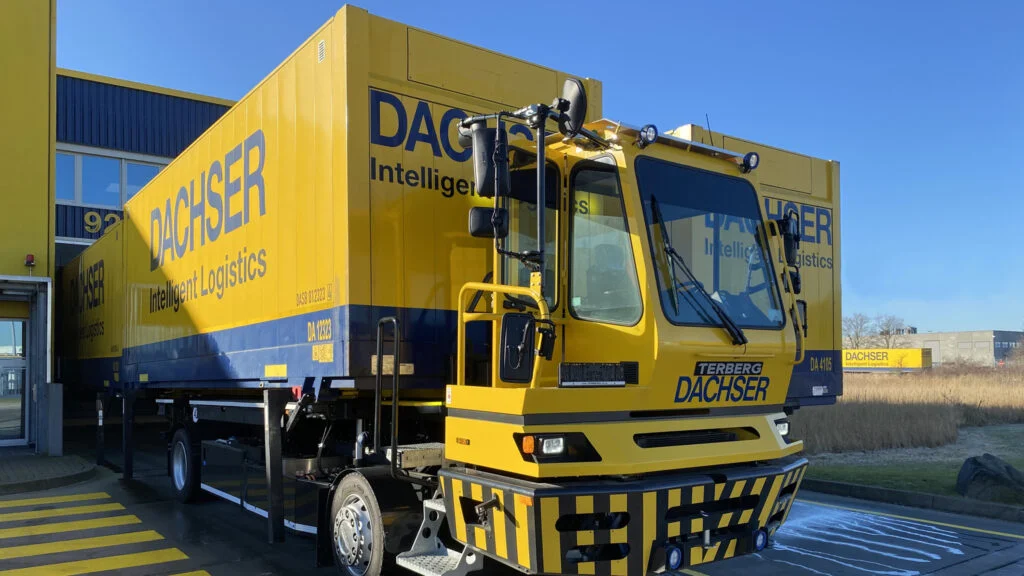
The first fully electric yard tractor has been in use since March 2023 at the DACHSER branch in Hvidovre near Copenhagen, Denmark. The vehicle, manufactured by the Dutch company Terberg, enables the emission-free transport of swap bodies and semi-trailers on the premises of the branch. In Hvidovre, it serves 41 gates and moves up to 200 swap bodies and semi-trailers on the site every day. Meanwhile, other vehicles of this type, including those manufactured by Kamag, are in use at various branches.
2023
Emissions-free on the company premises
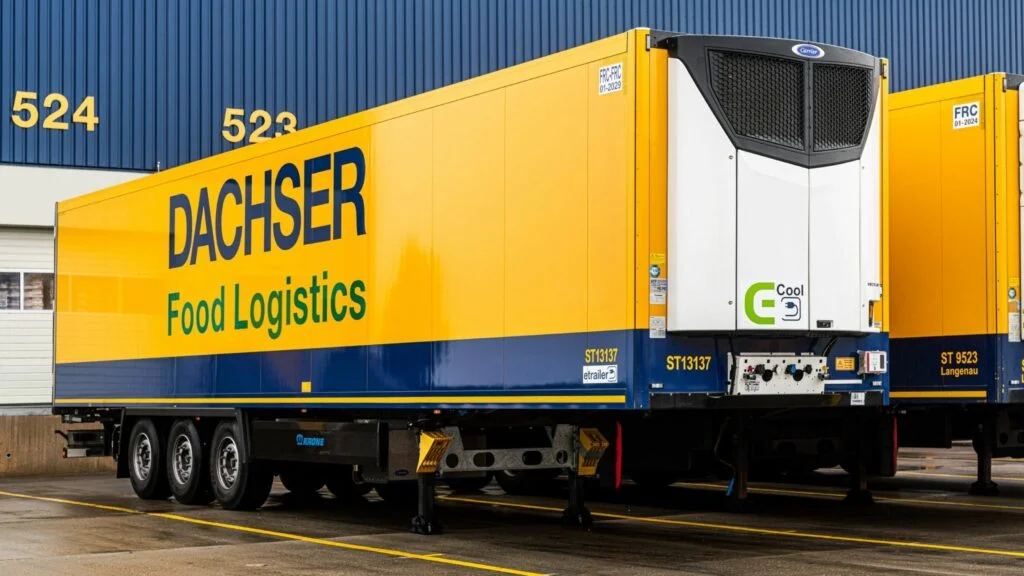
In 2023, DACHSER started testing emission-free refrigerated semi-trailers in Erlensee, Hamburg and Langenau, in order to gain practical experience in everyday logistics. The eTrailer, manufactured by Krone, features an efficient trailer unit, a relatively lightweight battery with a capacity of 23 kWh, as well as a generator axle. The use of this technology is intended to improve the climate balance of food transports.
2023
Electrically refrigerated food

Additional electric trucks went into operation at branches in various European countries – in 2024, for example, a 19-tonne Mercedes-Benz eActros for distribution transport in and around Dortmund as well as two 42-tonne Volvo articulated haulers. These are used during the day for customers in the region and at night for long-distance travel. The heavy electric trucks, of the Volvo FH Electric type, are each equipped with three electric motors and six drive batteries with a total capacity of 540 kWh (BOL – “Begin of Life”). The range, depending on the operating conditions, is approximately 300 kilometers. The electric trucks are each equipped with two interchangeable trailers. Meanwhile, the electric Volvo trucks are being used in networks at various locations.
2024
Electrified, weighing 42 tons

On January 16, 2025, DACHSER the 100 full. So many electric trucks with a total weight greater than 3.5 tons are now on the road in Germany and far beyond. The anniversary truck is a 16-tonner of the type Volvo FL Electric with a refrigerated body, which has been supplying Hamburg and the surrounding area with fresh food ever since. The model is from a new generation of vehicles and is equipped with a battery with a charging capacity of 375 kWh. This reliably supplies the cooling unit and still allows a range of around 300 kilometers.
2025
The Hundred is full
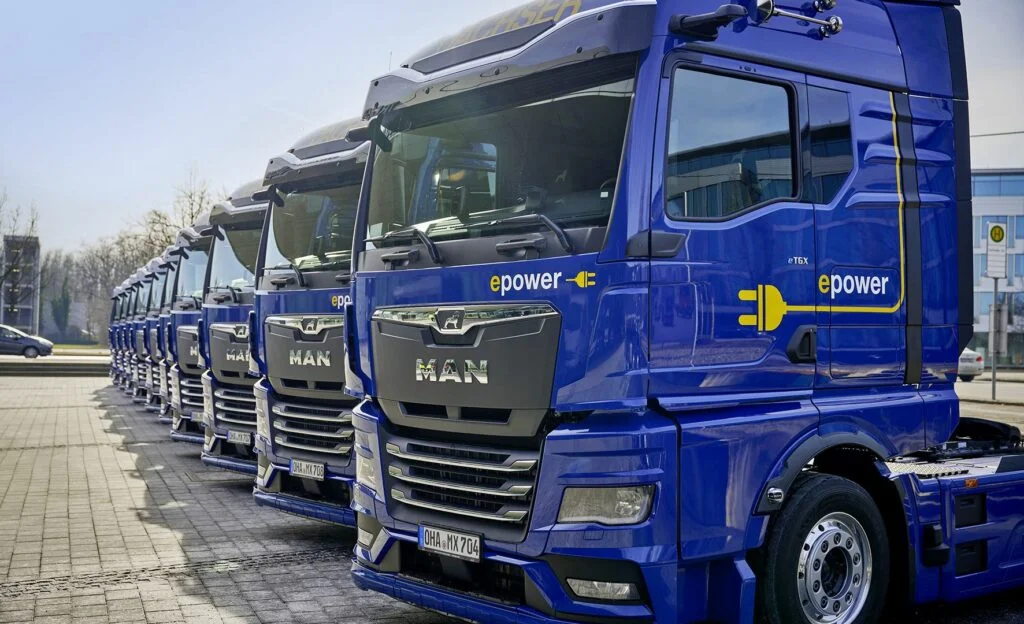
More and more electric trucks are proving their practicality in long-distance transport. They not only excel in distribution traffic, but are also regularly used for other routes with longer driving times. And on a larger scale. So, in December 2024, twelve Mercedes-Benz eActros 600 were delivered to the German-Austrian subsidiary Brummer Logistik. The vehicles, with a range of around 500 kilometers, are used for food transport in regional and long-distance traffic. More eActros 600 for the DACHSER network followed in July 2025.
Fully electric e-trucks of the type MAN eTGX were also put into service this year. The special ultra-lowliner tractor units expand the steadily growing e-truck fleet in the field of volume transport with so-called mega-trailers – units that offer an interior height that is 20 centimeters larger, as the loading area is only just over 100 centimeters above the road surface. With the same length and width and an overall height that remains below the permissible vehicle height of four meters in Germany, the available cargo space is increased by eight cubic meters.
2025
More load, more range
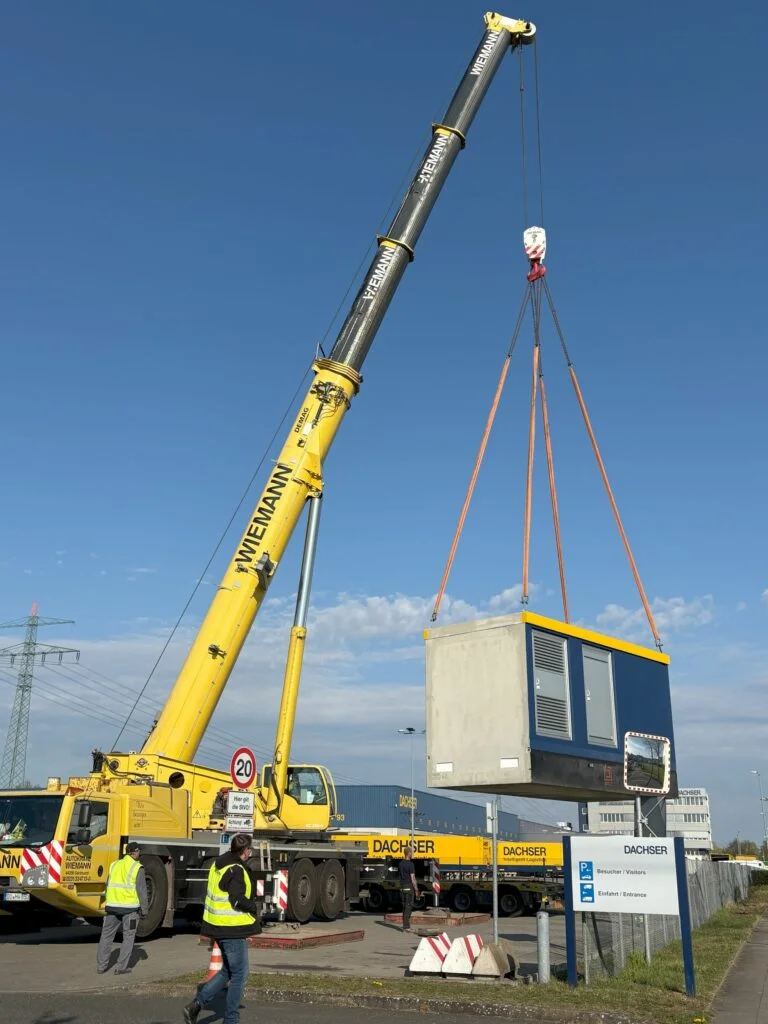
Heavy equipment was required to bring a new transformer station into place at DACHSER in Hamburg. A charging park for trucks with 18 charging points is currently being built at the branch, an e-mobility test site, which is scheduled to go into operation in September. Electric trucks can be parked here in spacious charging bays and conveniently charged while waiting. The charging stations have different capacities, ranging from 180 KW to 400 KW. The investment, supported by the KSNI federal program, is intended to demonstrate how truck charging can be implemented in a practical way at the DACHSER branch.
2025
The expansion continues
The success story of e-mobility at DACHSER is being actively continued. In line with DACHSER CEO Burkhard Eling, who outlined the way forward in April 2025: “We are serious about sustainability and climate protection and will consistently pursue initiatives in the areas of e-mobility and charging infrastructure as a driving force for the industry.” In the meantime, over 140 emission-free transport vehicles are on the road for DACHSER in various European countries.
Stefan Hohm, Chief Development Officer (CDO) at DACHSER, adds: “We continue to invest specifically in projects and partnerships to promote alternative propulsion systems. It is important to always keep an eye on the cost-benefit ratio and not to overburden either our own organisation or our customers in this process.”
In addition, there are still some challenges at present. The public charging infrastructure for trucks is still insufficiently developed. The establishment of additional charging stations at DACHSER branches also depends heavily on the capacity that can be provided by the grid operators, which varies greatly from region to region, for example in Germany.
In terms of vehicle development, significant progress has been made in recent years. A range of 500 kilometres makes electric trucks interesting for longer distances as well. And even though the purchase costs are high, it is already possible today to operate the emission-free vehicles economically, if the framework conditions such as electricity and toll costs are right.
More articles on the topic of e-trucks can be found here in the DACHSER magazine.



